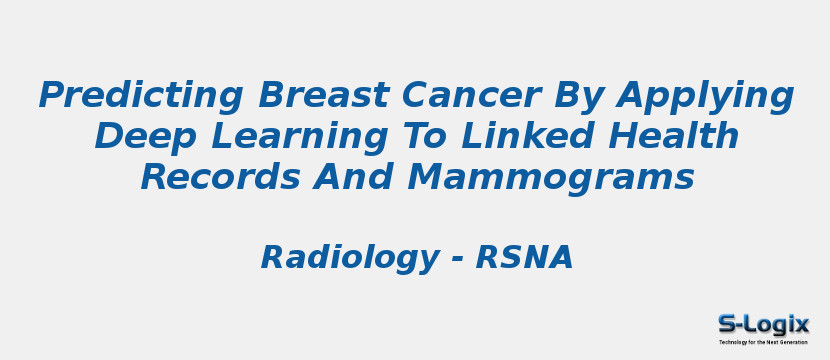Research Area: Machine Learning
Computational models on the basis of deep neural networks are increasingly used to analyze health care data. However, the efficacy of traditional computational models in radiology is a matter of debate.To evaluate the accuracy and efficiency of a combined machine and deep learning approach for early breast cancer detection applied to a linked set of digital mammography images and electronic health records.In this retrospective study, 52 936 images were collected in 13 234 women who underwent at least one mammogram between 2013 and 2017, and who had health records for at least 1 year before undergoing mammography. The algorithm was trained on 9611 mammograms and health records of women to make two breast cancer predictions: to predict biopsy malignancy and to differentiate normal from abnormal screening examinations. The study estimated the association of features with outcomes by using t test and Fisher exact test. The model comparisons were performed with a 95% confidence interval (CI) or by using the DeLong test. The resulting algorithm was validated in 1055 women and tested in 2548 women (mean age, 55 years ± 10 [standard deviation]). In the test set, the algorithm identified 34 of 71 (48%) false-negative findings on mammograms. For the malignancy prediction objective, the algorithm obtained an area under the receiver operating characteristic curve (AUC) of 0.91 (95% CI: 0.89, 0.93), with specificity of 77.3% (95% CI: 69.2%, 85.4%) at a sensitivity of 87%. When trained on clinical data alone, the model performed significantly better than the Gail model (AUC, 0.78 vs 0.54, respectively; P < .004).The algorithm, which combined machine-learning and deep-learning approaches, can be applied to assess breast cancer at a level comparable to radiologists and has the potential to substantially reduce missed diagnoses of breast cancer.
Keywords:
Predicting Breast Cancer
Deep Learning
Electronic Health Records
Mammograms
Machine Learning
Author(s) Name: Ayelet Akselrod-Ballin, Michal Chorev , Yoel Shoshan, Adam Spiro, Alon Hazan, Roie Melamed, Ella Barkan, Esma Herzel, Shaked Naor, Ehud Karavani, Gideon Koren, Yaara Goldschmidt, Varda Shalev, Michal Rosen-Zvi, Michal Guindy
Journal name: Radiology
Conferrence name:
Publisher name: National Center for Biotechnology Information
DOI: 10.1148/radiol.2019182622
Volume Information: Vol. 292, No. 2
